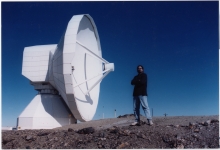Radiotelescopio de Arecibo
New consortium to manage the Arecibo Observatory
Submitted on 22 February 2018 - 8:41pm
This article is reproduced by CienciaPR with permission from the original source.
Arecibo Observatory helps solve mystery in galaxy far away
Submitted on 5 January 2017 - 2:22pm
This article is reproduced by CienciaPR with permission from the original source.
Arecibo Observatory will support NASA in studying asteroid
Submitted on 26 January 2015 - 5:22pm
This article is reproduced by CienciaPR with permission from the original source.
20th anniversary of a Nobel Prize, made in Puerto Rico
Submitted on 25 September 2013 - 2:36pm
This article is reproduced by CienciaPR with permission from the original source.
20th anniversary of a Nobel Prize, made in Puerto Rico
Submitted on 25 September 2013 - 2:36pm
This article is reproduced by CienciaPR with permission from the original source.













